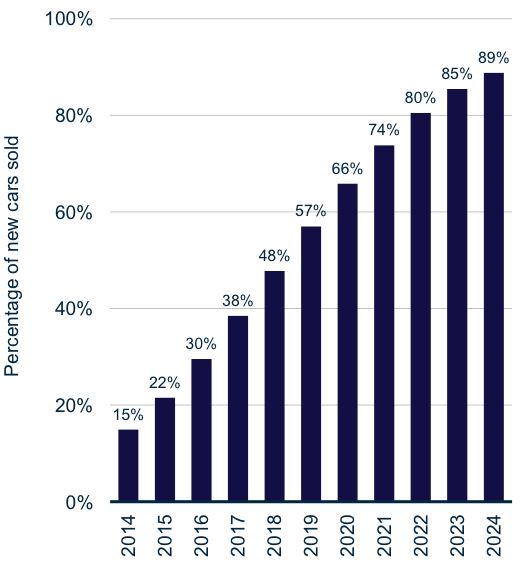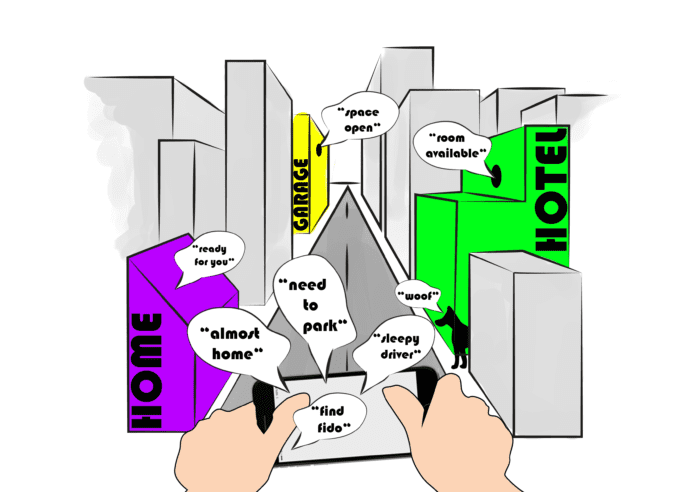In the next five years we will see many new developments in services for the connected car. But what about the connected car as-a-service?
While discussing the issue with different companies in this area, which types of services would be most prevalent and would there be connected car specific services, there was quite a bit of disagreement within the group as to the direction the market would take. One observation was that when specifically asked about “end-user services,” some companies came back with answers related to technology, not services. This is an indicator that there is still work to do on marketing and educating the wider industry on the connected car vs. the technology that enables the connected car. This challenge also comes through in end-user surveys on this topic where the general consumer still doesn’t fully understand what the connected car is, why they need it or if they will pay for it.
Some of the more interesting and controversial thoughts I gathered are discussed below, related to both services and technologies.
Services
“We assume the car will become a new marketplace,” said Heinz Honemann, SVP sales EMEA/senior executive automotive at Alcatel-Lucent. “Governments and smart cities will motivate drivers to optimize use of network and traffic infrastructure.”
- End-user services will be driven by the OEMs and not the mobile operators.
- Initially connected car services will be segmented between personal infotainment services and car usage services – in the future they will merge into a single service.
- Electric vehicle related services:
- Locate charging facilities.
- Shop in my location and you’ll receive free charging while you’re in the stores.
- Huge increase in personalization of services using context of preferences and location.
- OEMs will focus on providing services core to the driving experience – safety, security, vehicle performance.
- Pay-as-you-go fleets.
- The car as an extension of your house.
- Vehicle-centric services – track my car, open my door, etc., are fully commoditized during the next five years.
- NFC-based services.
“There isn’t a killer app for the connected car, it’s everything that helps the driver to reach his destination,” said Stephane Petti, machine-to-machine business development director for Orange Business Services. “There won’t be connected car specific services, cars will just be connected.”
Technologies
There were inconsistencies on the topic of self-driving features during the next five years, ranging from semi-autonomous cars being on the road in this time frame, to there being trials in this time frame, to not having this functionality on the road in this time frame. Other topics included:
- ADAS in all vehicles with some “vehicle-to-x” starting to take shape.
- Rental cars that will pick you up from their parking spot and allow you to leave them curbside and park themselves.
- Self-parking cars.
- Enhanced truck driving hours through a combination of autonomous driving and traditionally driven functions.
- LTE-based infotainment.
- Car as a Wi-Fi hot spot.
- Small base stations deployed within cars to improve coverage and handovers – network operator reduces your connectivity costs in return for space in your car.
- Embedded technology is coming, but who will pay for the connectivity associated with it?

The growth of embedded connectivity solutions is predicted to be rapid as projected by Analysys Mason, and as a result this challenge will need to get resolved in the near future.
Harman views “navigation as the search engine of the connected car experience.” Imagine the possibilities for service overlays with this vision.
One controversial view to consider while imagining these possibilities is that of the car as nothing more than a “big thing.” Elektrobit felt this was the case, with the car being basically an agent to communicate the traffic and road situation data to enable V2X. Mobility is where the services should focus. This topic is about driver safety, driver entertainment and the overall improvement of the driver’s journey.
Mobility – the journey from point A to point B no matter what the means – is a topic that came up throughout the discussions. The overall concept of mobility spanning beyond the car and starting before you enter your car and continuing after you exit, is a key topic in discussions I am having lately with organizations across the spectrum of the connected car industry. This will be a topic with increasing focus as end-user services are crafted in this market.
Want to learn more about these topics? Join RCR Wireless News’ driving profits through the intersection of telecommunications and automotive webinar to hear from industry experts on April 15. The link to register is here. Also, on this day a new feature report on this topic will be available for download at no charge.
Like what you read? Follow me on Twitter!
Claudia Bacco, Managing Director – EMEA for RCR Wireless News, has spent her entire career in telecom, IT and security. Having experience as an operator, software and hardware vendor, and as a well-known industry analyst, she has many opinions on the market. She’ll be sharing those opinions along with ongoing trend analysis for RCR Wireless News.

